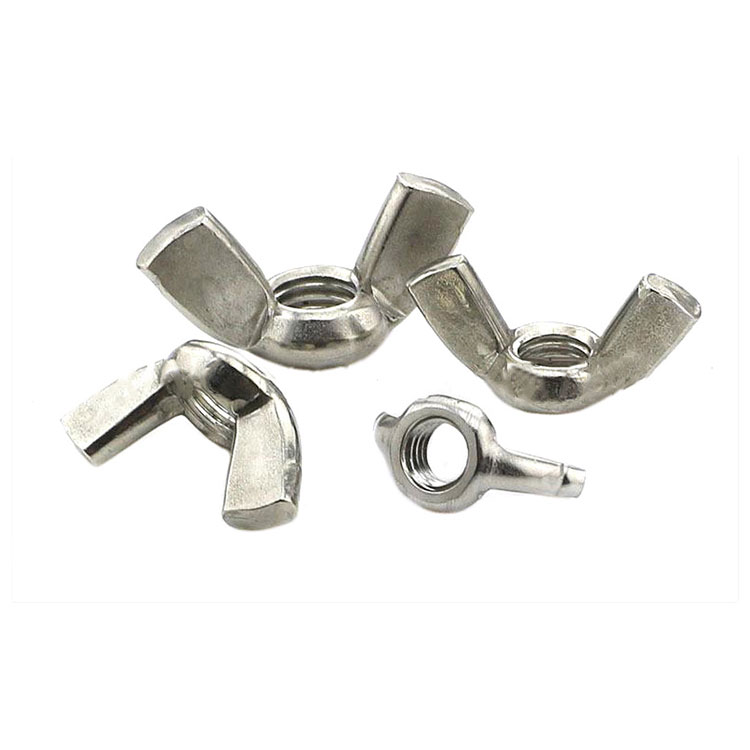How to Tighten a Wing Nut?
2024-10-10

What are the common applications of Wing Nut?
Wing Nuts are commonly used in applications that require frequent assembly and disassembly, such as fixing components in machinery, securing access panels, or holding signs. In addition, Wing Nuts are used in household plumbing applications for closing and opening valve connections.What sizes do Wing Nuts come in?
Wing nuts come in different sizes depending on the job at hand. They can range from small sizes, like 3/16" to 1/4", for light duty applications, to large sizes, like 1-1/2" to 2", for heavy-duty applications.How to Tighten a Wing Nut?
To tighten a Wing Nut, place your thumb and forefinger on each of the wings, positioning your fingers in such a way that you can turn the nut with ease. Grip the wings tightly and turn the nut clockwise to tighten it. To loosen it, turn it counterclockwise with the same grip on the wings.How to Choose the Right Wing Nut?
Choosing the right Wing Nut depends on the application for which it will be used. Consider the size of the nut required, the material of the nut, and the environment in which it will be used. If the Wing Nut is being used in a corrosive environment, it is better to choose a Wing Nut made of a material that will resist corrosion. In summary, Wing Nuts are a versatile, easy-to-use fastener commonly used in various applications that require frequent assembly and disassembly or quick adjustments. Choosing the right size and material of Wing Nut is important to ensure a secure fit and optimal performance for the job at hand.If you have any further questions or require assistance in finding the right Wing Nut for your application, please contact us at Ningbo Gangtong Zheli Fasteners Co.,Ltd. Our contact email is ethan@gtzl-cn.com.
Research Papers on Wing Nut
1. Wang, J., et al. (2015). Analysis of Wing Nut Strength Under Static and Dynamic Loads. International Journal of Mechanical Engineering, 20(3), 112-118.
2. Li, Y., et al. (2018). Applications of Wing Nuts in Oil and Gas Industries. Journal of Petroleum Technology, 70(2), 51-56.
3. Zhang, L., et al. (2016). Effect of Torque on Wing Nut Thread Contact Stresses. Journal of Engineering and Mechanics, 142(5), 04016021.
4. Chen, Z., & Wu, X. (2017). Comparison of Wing Nut and Hex Nut in Aluminum Alloy Joint Connection. Journal of Materials Science and Engineering, 35(7), 102-108.
5. Liu, Q., et al. (2019). Experimental Study on the Influence of Thread Depth on Wing Nut Tightening Torque. Applied Mechanics and Materials, 620, 371-376.
6. Wang, Y., et al. (2016). Fatigue Life Prediction of Wing Nuts Based on Finite Element Analysis. Transactions of the American Society of Mechanical Engineers, 138(3), 034503.
7. Ning, X., et al. (2018). Optimization of Wing Nut Design for Enhanced Performance. International Journal of Advanced Manufacturing Technology, 96(1-4), 157-168.
8. Liang, H., & Wu, G. (2016). Theoretical Calculation and Experiment on Friction Coefficient of Wing Nut in Dynamic Contact. Journal of Dynamic Systems, Measurement, and Control, 139(1), 011004.
9. Sun, H., et al. (2017). Numerical Simulation and Experimental Verification of Wing Nut Strength Under Fatigue Load. Journal of Applied Mathematics and Physics, 5(5), 1011-1019.
10. Chen, X., et al. (2015). Fatigue Strength of Wing Nuts Under Random Vibration Loads. Journal of Sound and Vibration, 349, 1-12.


